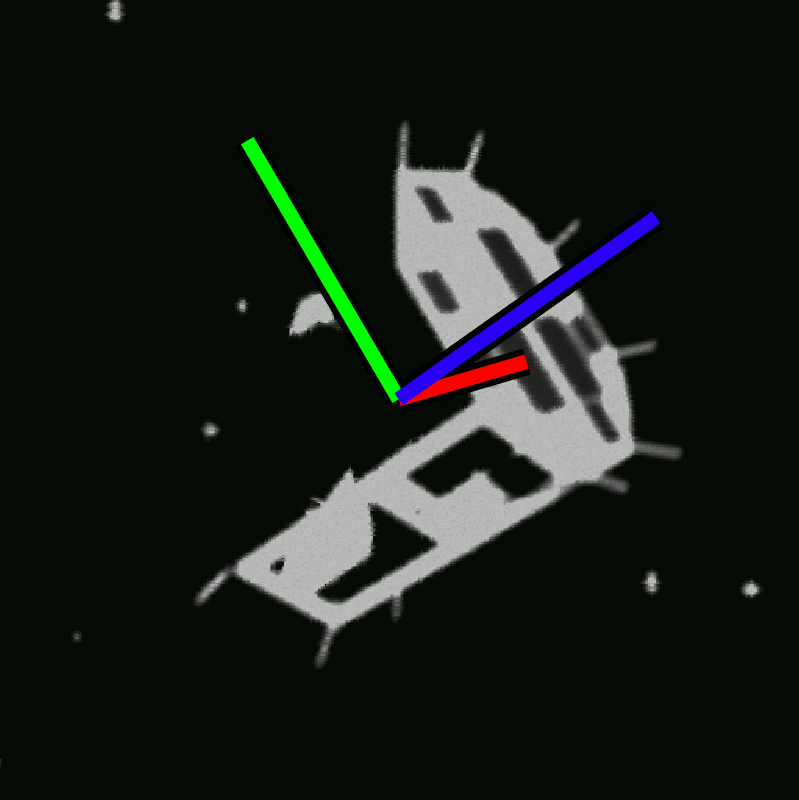These are the projects currently taking place at eSpace and within the student associations for Autumn 2024.
This info icon shows which projects are still accepting applications from students. Hover to view.
-
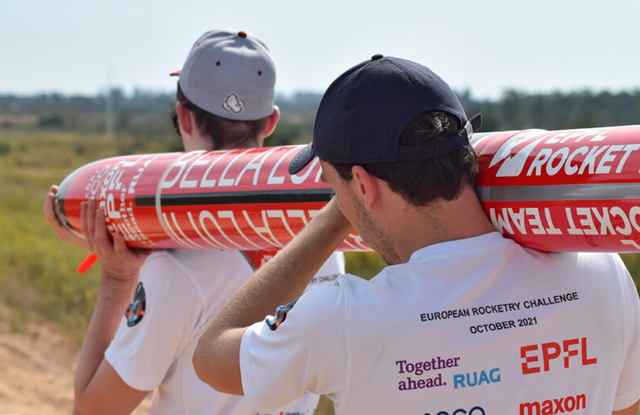
EPFL Rocket Team
-
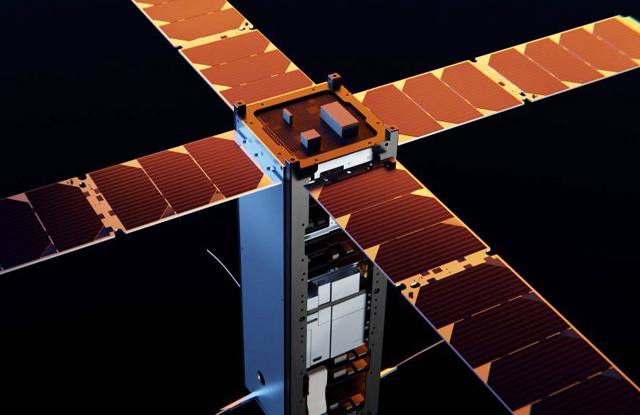
EPFL Spacecraft Team
-
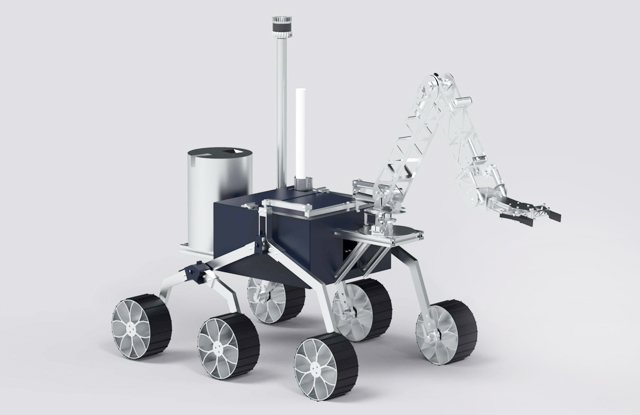
Xplore
-
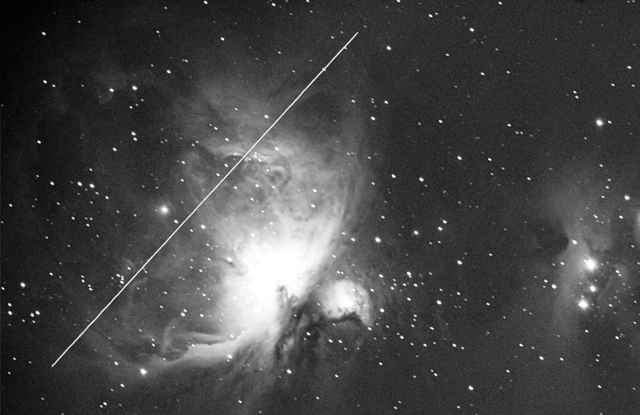
Space Situational Awareness
-
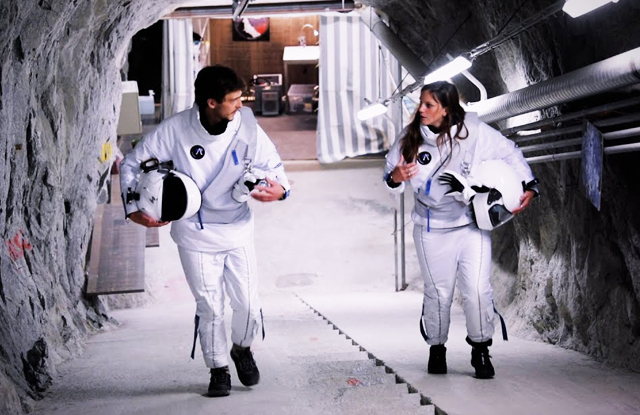
Asclepios
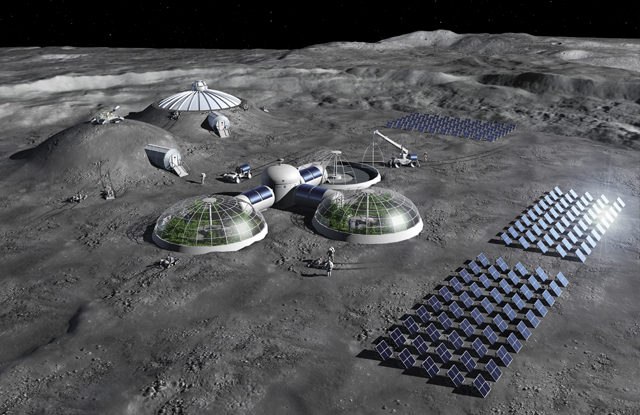
Sustainable missions to the Moon – Sustainability definition in the In-Situ Resource Utilization value chain
Supervisor: eSpace, Mathieu Udriot / Prof. Jean-Paul Kneib
Type of Project: Master project, 1 student
Duration: 14 weeks (Official start date: 09.09.2024)
Submission of final report: TBD in January 2025
Final Presentation: TBD
Recommended: This project is suitable for a student interested in the space industry, and space exploration, especially on and around the Moon.
CONTEXT
eSpace is actively researching and developing methods and products in space sustainability. This large topic includes work on space debris risks, life cycle assessment of space systems, mitigations of environmental impacts, rating incentives, and decision-making support to include sustainable aspects in the early design phase of space missions and systems.
Lunar activities will ramp up in the coming years, and interest is growing for long duration human missions on the Moon, in-situ resources utilisation (ISRU), and commercially-oriented missions. All these expected activities lead to questions regarding sustainability, with potentially a large number of launches required, many satellites deployed on lunar orbits, astronomical observations that could be threatened, and competition that will explode.

During a previous project, the first set of mission guidelines for lunar activities were drafted, focusing on the environmental sustainability regarding space debris and orbital capacity around the Moon. Missing fields and next research steps about lunar sustainability have been identified. EURO2MOON is supporting the research project to better understand the sustainability of potential future European missions.

PROJECT SCOPE
In this project, the student will look into the value chain of ISRU (from extraction, transport, transformation, to storage) on the lunar surface and identify the environmental impacts at each step to create a definition of what is “sustainability” for an ISRU mission.
The student will find or define indicators and measurements that can be used / done to monitor and anticipate the sustainability of those missions.
Based on its findings, the student will complement the existing lunar sustainability guidelines with existing ones or by creating new ones.
OUTCOME
- A student report and final presentation
- An update of the Lunar Space Sustainability Guideline
- An abstract for a [TBD] conference (e.g. Space Resource Week 2025)
TASKS
- Literature review on current and future lunar activities, and on guidelines / laws / common practice by spacecraft operators and agencies.
- Literature review on ISRU, contacts with Euro2Moon about the ISRU value chain.
- [TBD with supervisor] Other interviews and interactions with stakeholders interested in lunar sustainability.
- Compilation of knowledge, information, (and interviews) to create and improve the definition of “sustainability” for lunar ISRU missions, extract new guidelines and indicators.
- Update of the Lunar Space Sustainability Guidelines
CONTACT
Mathieu Udriot
Systems Engineer on Sustainable Space
mathieu.udriot@epfl.ch
Emmanuelle David
Executive Director eSpace
emmanuelle.david@epfl.ch
STATUS OF THE PROJECT

Measurements of emissions (gas and particles) during propulsion tests at the EPFL Rocket Team
Supervisor: eSpace, Mathieu Udriot / Prof. Jean-Paul Kneib
Type of Project: Semester project, 1 student
Duration: 14 weeks (Official start date: 09.09.2024)
Submission of final report: TBD in January 2025
Final Presentation: TBD
Recommended: This project is suitable for a student interested in the space industry, propulsion systems, sensors, and test benches (set-up), data acquisition, and atmospheric impacts. Prior knowledge in data acquisition or measurement is a plus.
CONTEXT
eSpace is actively researching and developing methods and products in space sustainability. This large topic includes work on space debris risks, life cycle assessment of space systems, mitigations of environmental impacts, and decision-making support tools to include sustainable aspects in the early design phase of space missions and systems.
The assessment of the environmental impacts of rocket engine exhausts in the atmosphere is not yet backed by solid scientific knowledge. There is no accepted method to translate the emission of a given amount of exhaust species (like CO2, CO, H2O, HCl, black carbon, or else) at high altitude into an impact (like CO2 equivalent). What can be done already is to quantify the emissions of propulsion systems, so as to understand which particles and gases are generated and exhausted by the engine and in what quantity during tests.
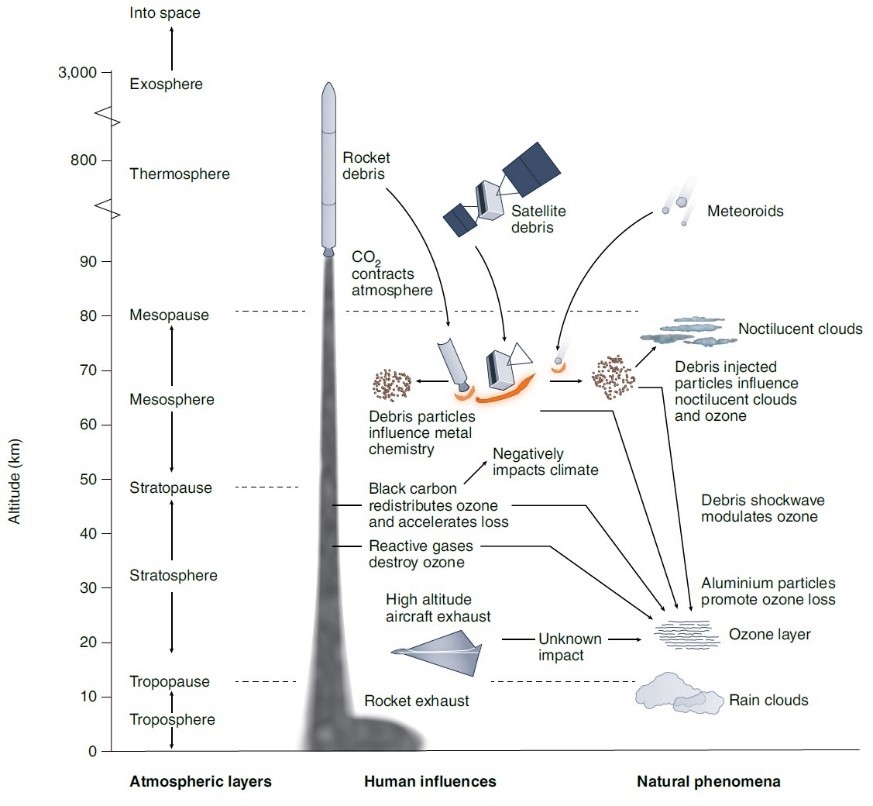 Jamie D. Shutler et alli, “Atmospheric impacts of the space industry require oversight”, (August 2022), in: Nature Geoscience, volume 15, p. 598–600, www.nature.com/naturegeoscience.
Jamie D. Shutler et alli, “Atmospheric impacts of the space industry require oversight”, (August 2022), in: Nature Geoscience, volume 15, p. 598–600, www.nature.com/naturegeoscience.
The EPFL Rocket Team is developing and testing new propulsion systems, with engines using different types of propellant, and based on new design, in preparation for its future rockets. The medium-term goal of the ERT is to fly to 100 km altitude.

It is important for the EPFL Rocket Team to understand their student-developed engines, not only in terms of performance but also regarding emissions. Knowledge about the content of the exhaust could drive future development to select different types of propellant, change mix ratio or other design parameters.
The topic is also very relevant for space agencies and large companies which are interested in measuring emissions of their engines during ground tests and directly in the atmosphere, to understand the chemistry that takes place at different altitude level.
PROJECT SCOPE
The main goal of the project is to prepare a measurement campaign of the exhaust gases and particles generated by rocket engines used by the EPFL Rocket Team.
The test bench used by the team will require adaptations to accommodate sensors needed for the measurements. The measurements can possibly be carried out during ignition tests, and static fire tests. The results could then be used to plan further research and/or possible measurements and tests.
It is also in the scope to investigate the feasibility to conduct another test campaign during low altitude launches by the EPFL Rocket Team.
OUTCOME
- A report including
- The state-of-knowledge regarding launchers’ exhausts.
- The state-of-affair regarding sensing method for the species of interest.
- A list of selected gas / particle sensors and measurement instruments adapted to the task.
- Computer-Aided Drawings of the ERT’s test bench adaptations, needed for exhaust measurements.
- Recommendations for future studies.
- A comprehensive test procedure to conduct a measurement campaign.
- (optional, if time allows) Results of some measurements made on the ERT propulsion system, in a format easy to use for future students.
TASKS
Phase 1:
- Literature review on launchers’ exhausts depending on their propulsion type.
- Searching for the best suited sensors to perform measurements of interest.
Phase 2 (after ordering some sensors):
- Drawing CAD adaptation for the test bench.
- Writing a test procedure to use for a measurement campaign.
- Implement changes on the test bench (and if time allows, perform sets of measurement using the sensors).
Phase 3:
- Searching for the best suited sensors and measurement scenario(s) to perform in-flight data collection of emissions of interest. Ideas include but should not be limited to: on-board sensors, air balloons, second rocket with sensors, satellite imaging, etc.
- Deeper investigation and systems architecture for a subset of selected potential solutions.
CONTACT
Mathieu Udriot
Systems Engineer on Sustainable Space
mathieu.udriot@epfl.ch
Leonard Bongiovanni
EPFL Rocket Team Hyperion Systems Engineer
leonard.bongiovanni@epfl.ch
Joachim Despature
EPFL Rocket Team president
joachim.despature@epfl.ch
STATUS OF THE PROJECT

Life Cycle Assessment and Ecodesign with industry partner (Latitude)
Supervisor: eSpace, Mathieu Udriot / Prof. TBD depending on university
Type of Project: Internship or Master project, 1 student
Duration: ~4 months, depending on type and university
Submission of final report: TBD in January 2025
Final Presentation: TBD
Recommended: This project is suitable for a student interested in the space industry, launcher design, and environmental impacts mitigations. Prior knowledge of systems engineering, design in any engineering topic is a plus. Knowledge or experience with Life Cycle Assessment and Eco Design is an asset, but not mandatory.
CONTEXT
eSpace, is actively researching and developing methods and products in space sustainability. This large topic includes work on space debris risks, life cycle assessment of space systems, mitigations of environmental impacts, and decision-making support to include sustainable aspects in the early design phase of space missions and systems.
eSpace is now working for an ESA project called REACT with a consortium that includes IRS Stuttgart, and ISAE SUPAERO. The project will see the development of a simplified and space-specific tool for rapid life cycle assessment (LCA) of future space systems. The goal is to be able to run an analysis of the environmental impacts early in the design phase to provide valuable results to support decision-making for ecodesign when it is still possible and affordable. Ecodesign is a process to modify the architecture and design choices in order to mitigate the identified environmental hotspots.
eSpace is in contact with several companies that are interested in testing the methodology with their own mission.
One of them, Latitude, is based in Reims (France), developing a light launcher to deliver payload in LEO.

PROJECT SCOPE
The intern or master project student would help the company in their future missions by assessing and improving the environmental impact of their products, throughout their entire life cycle. They would also act as a privileged point of contact within the company, to support the research and tool development of the REACT consortium.
OUTCOME
A report including:
- Goal and scope definition of the LCA study
- Life cycle inventory for a TBD mission, might mean new LCI datasets created
- Life cycle impact assessment
- Interpretation of the results
- First steps in eco-design efforts for future missions
TASKS
Phase 1: Evaluate the environmental impact of an ongoing space mission:
- Literature review.
- Define / refine the goal and scope of the study, including the functional unit, and system boundaries.
- Conduct life cycle assessments (LCA) at the company, considering all mission phases, from design and material extraction to end of life.
- [TBD] Collect data to create new LCI datasets for the assessment
- Use the tools developed by the REACT consortium for LCA screening, and environmental hotspot identification.
- Be the point of contact for interactions between the consortium and the industrial partner on this topic.
Phase 2: Incorporate eco design principles into the company’s product development process:
- Identify opportunities to minimise environmental impact through eco design.
- Collaborate with various teams to implement environmental improvements.
CONTACT
Mathieu Udriot
Systems Engineer on Sustainable Space
mathieu.udriot@epfl.ch
Pauline Regade
Latitude
pauline.regade@latitude.eu
STATUS OF THE INTERNSHIP
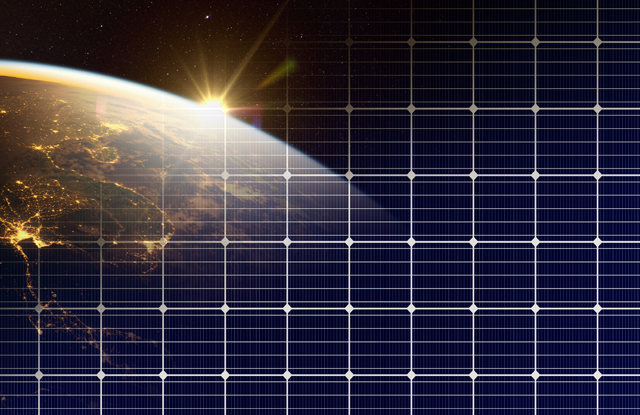
Test platform for space photovoltaic devices
Supervisor: Prof. Michael Graetzel (LPI Lab)
Type of Project: Internship, 1 student (salary 2500 CHF per month)
Duration: 6 months
Submission of final report: TBD
Final Presentation: TBD
Recommended: This project is suitable for a student interested in electronics, in photovoltaic technologies, and in the space industry.
Good knowledge of electronic design and programming is mandatory. Prior knowledge in photovoltaic is preferred. Strong interest in space technologies and “new space” would be very much appreciated.
The internship will be based at Swiss Federal Institute of Technology Lausanne (EPFL) in the Laboratory of Photonics and interfaces-LPI.
CONTEXT
HelioW Project, is actively researching and developing power generation products (typically photovoltaic device) for space application. Our goal is to be a game changer in the space industry and establish HelioW as a new market player in the new space industry offering lower cost, lower climate impact PV technology compared to existing solutions. If you are keen to build something that will soon go to space, join the project!
HelioW is working very closely with the laboratory of Photonics and interfaces at EPFL and is benefiting from the support of the EPFL start-up ecosystem.
PROJECT SCOPE
The intern would help the project in its proof of concept by designing and manufacturing the test platform that will be used to characterised its first prototypes. A test platform is typically an electronic hardware controlled by a software that will help us control the test conditions and collect data from our PV product. The test platform will be used to perform performance and reliability test, both on earth (typically in vacuum environment), and eventually during a space flight. The intern will work closely with EPFL space center using its infrastructures to reach the expected outcomes detailed below.
OUTCOME
The deliverables or outcomes of the internship will be further discussed at the beginning of the internship period to align expectations:
- Test platform to characterise and demonstrate performances of our Photovoltaic device detailed test plan (on ground and in space)
- Test platform detailed design report (design description, interface document, etc…)
- Test platform manufacturing documents (BOM, gerber files, etc…)
- Software documentation (SW which will run the test platform and acquire results)
- Test report on first samples (in various environment)
- Prepare documentation for integration on first flight payload
TASKS
Phase 1: Define test plan and design test platform compatible with space environment:
- Literature review
- Definition of first sample test plan
- Design of test platform (Hardware and software)
- Validation of test platform (hardware and software)
Phase 2: Run test on working samples:
- Run preliminary tests on photovoltaic device at room temperature and standard vacuum conditions (benefiting from space center infrastructures)
- Run tests on PV devices in harsh environment (thermal cycling, vacuum conditions)
- Prepare test platform for first test flight
CONTACT
Simon Russeil
simon_russeil@hotmail.com
STATUS OF THE INTERNSHIP

Handbook on sustainable design practices for space missions and the launch segment
Supervisor: Marnix Verkammen / Prof. Jean-Paul Kneib
Type of Project: Semester project, 1 student
Duration: Duration: 14 weeks (Official start date: Sept 9th 2024)
Submission of final report: TBD in January 2025
Final Presentation: TBD
Recommended: This project is suitable for an ambitious student interested in the space industry, in gaining insights into the upcoming trends of space sustainability, and in playing an essential role in the creation of industry-wide sustainability guidelines. Knowledge on the space sector and in particular launchers is a plus.
CONTEXT
eSpace is actively researching and developing methods and products in space sustainability. This large topic includes work on space debris risks, life cycle assessment of space systems, mitigations of environmental impacts, and decision-making support to include sustainable aspects in the early design phase of space missions and systems.
To help designers take into account these topics and act upon them during the design phase, eSpace developed a handbook which provides general recommendations for space mission designers. It guides them through the environmental implications of their propulsion system, helps them with choosing additional hardware for more sustainable orbital usage during and after the mission, discusses the operational best practices and highlights key performance indicators for their satellite design. As such, the handbook currently focuses on the space segment of space missions.
With eSpace’s ambition to create an industry-leading and all-encompassing handbook, it is foreseen to add for more sustainable practices of the launch segment, ground segment and the infrastructures. These would help companies and designers of these respective segments to navigate through the best practices and most suitable decisions to be made, with respect to a reduction in environmental impacts.
PROJECT SCOPE
In this project, the student will research sustainable practices for either the launch or ground segments of space missions, but may also investigate both. The main focus in the launch segment would be amongst others the propulsion technologies, disposal options and other common practices. The student will also brainstorm on practices in the ground segment which should be detailed in the Handbook during a future semester project.
OUTCOME
- Writing of the Part on Launch Segment or Ground Segment (depending on the sudent’s interests) in the Handbook on sustainable space design practices
- Critical review of the current state of the Handbook
TASKS
- Critical read of the Handbook
- Literature review on the launch segment and its sustainable practices or recommendations
- Writing of the Launch or Ground Segment part in the Handbook
- Suggestions for future work on the non-chosen segment (launch or ground)
CONTACT
Marnix Verkammen
Engineer, eSpace
marnix.verkammen@epfl.ch
STATUS OF THE PROJECT
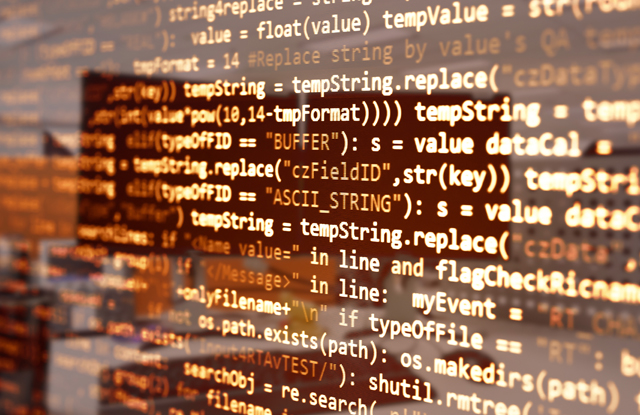
Cubesat space mission eco-design software with machine learning.
Supervisor: Marnix Verkammen / Prof. Jean-Paul Kneib
Type of Project: Semester project, 1 student
Duration: Duration: 14 weeks (Official start date: Sept 9th 2024)
Submission of final report: TBD in January 2025
Final Presentation: TBD
Recommended: This project is suitable for a student interested in sustainability, software development, and the space sector, as well as in having a key contribution to the future of MAKE teams such as the EPFL Spacecraft Team. Prior knowledge on machine learning is essential. Knowledge on life cycle assessment (LCA) and LCA tools (e.g. Brightway2, etc) is a plus, but not essential.
CONTEXT
eSpace is actively researching and developing methods and products in space sustainability. This large topic includes work on space debris risks, life cycle assessment of space systems, mitigations of environmental impacts, and decision-making support to include sustainable aspects in the early design phase of space missions and systems.
A Life Cycle Assessment (LCA) follows specific steps, which may need to be iterated. The key first step is to define the precise goal and scope of the assessment, including the system boundaries and the assumptions to be made. Following this, the inventory of the various activities and corresponding emissions ought to be made in the Inventory Analysis (LCI). The resulting environmental impacts of these activities and emissions are then computed in the Life Cycle Impact Assessment (LCIA) phase. It is only after this that the results may be interpreted in the Interpretation phase, before conclusions and actions may be taken. This is summarised in the figure below.
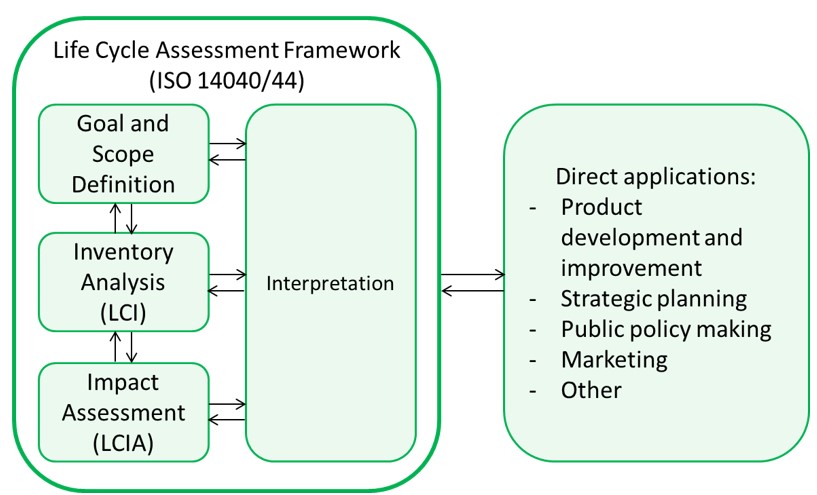
https://blogs.esa.int/cleanspace/2018/04/20/how-to-make-environmental-friendly-space-missions/
The least intuitive step of Life Cycle Assessment may be that of the interpretation, necessary for any decision making and mitigation of environmental impacts of a future design. It involves assessing a multitude of impacts, classified in various impact categories, and drawing conclusions regarding the overall environmental performance of the system analysed. There is a high risk that, during this step, the interpreter cherry-picks more commonly known impact categories, such as Climate change potential and Resource Use, and ignores lesser-known ones, such as Eutrophication or Ozone Depletion. This lack of a global picture of the entire environmental impacts may result in wrong decisions being made during the eco-design process, and may even lead to burden-shifting, where the environmental burdens are increased in specific impact categories, unbeknownst to the interpreter.
To simplify the interpretation stage for CubeSat missions (i.e. missions with one or more satellites of a standard dimension of a multiple of 1Unit, or 10x10x10cm boxes), the EPFL spacecraft team has started conceptual work on an eco-design software supported by Artificial Intelligence (AI). Its aim is to let future designers of such missions input the environmental life cycle inventory of their mission, to easily receive an overview of the environmental hotspots and of the best strategies to reduce them.
With this, the EPFL Spacecraft Team aims to be at the forefront of the sustainable development of CubeSat missions. Having performed a LCA of their flagship CHESS mission and having generalised the inputs to common CubeSats, the team is now looking forward to the development and future use of such a AI tool.
PROJECT SCOPE
The student shall:
- Gather information on similar tools in adjacent industries.
- Research the best ways to implement machine learning for the eco-designing process of a CubeSat
- Choice and implementation of a neural network which would later be implementable in a tool eco-design tool
OUTCOME
- Choice and implementation of a proof-of-concept neural network which:
- Allows users to input data on their cubesat
- Is based on already existing LCA of generalised cubesats
- Suggests the most judicious ecodesign steps
- A report which contains:
- A literature review of exisiting ecodesign tools
- An explanation of how the Machine Learning algorithm was chosen and works
- Suggestions for future work and improvements
TASKS
- Literature review on existing ecodesign tools and ecodesign tools powered by a Neural Network
- Research into requirements for the ecodesign AI
- Development of the software.
- Identification of suggested future work and improvements
CONTACT
Marnix Verkammen
Engineer, eSpace
marnix.verkammen@epfl.ch
Angelina Frolova
Member of the EPFL Spacecraft Team
angelina.frolova@epfl.ch
STATUS OF THE PROJECT
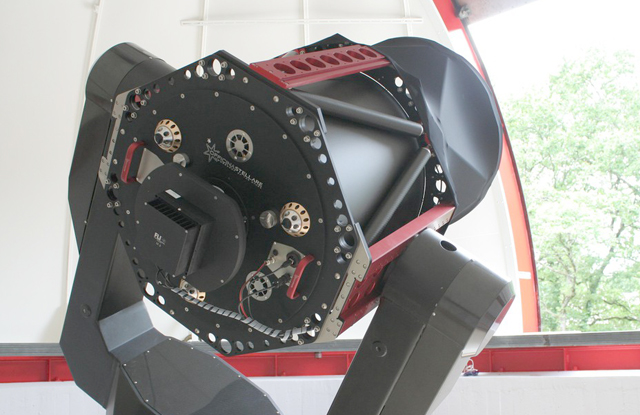
Correct the rolling shutter effect of the new TELESTO CMOS detector
Supervisor: eSpace/LASTRO (Prof. Jean-Paul Kneib/Stephan Hellmich)
Type of Project: Semester project (TP4)
Duration: 14 weeks (Official start/end date: September 9-December 20)
Submission of final report: January 13
Final Presentation: TBD
Recommended: This project is suitable for a student interested in astronomy and optical instrument design.
CONTEXT
The 0.6m TELESTO optical telescope at the Observatory of Geneva was recently upgraded with a new CMOS detector. The instrument uses a rolling shutter which results in the time of exposure is not the same for each pixel in the acquired image. While this effect is not important for most applications, it needs to be considered for example for space object observations, where knowledge about the precise timing is very important to determine the orbit or to perform photometric analysis. The characteristics of the shutter were already identified in a previous project. This project aims to develop a technique to correct for the rolling shutter effect for observations of fast moving objects.
PROJECT SCOPE
During the project, you will familiarize yourself with the new detector and learn about requirements of passive optical observations of satellites and space debris. In order for the camera to be used for space debris observation, the rolling shutter effect needs to be corrected for. Based on previous work where the line readout speed was determined, a method needs to be implemented that determines the precise start and end of exposure for each pixel of the detector. This method needs to account for trailed observations (where the positions of the stars on the image remain constant over the exposure) and tracked observations (where the stars move across the detector while exposing). To verify the correction, you will use TELESTO with the new detector to perform test observations of satellites in Low Earth Orbit (LEO), apply the shutter correction and verify the astrometry derived from the images.
TASKS
- Familiarize yourself with the hardware and software interfaces
- Implement routines to correct the shutter effect
- Perform observations of satellites in LEO
- Verify the shutter correction
CONTACT
Dr. Stephan Hellmich
LASTRO - EPFL Laboratory of Astophysics
stephan.hellmich@epfl.ch
STATUS OF THE PROJECT
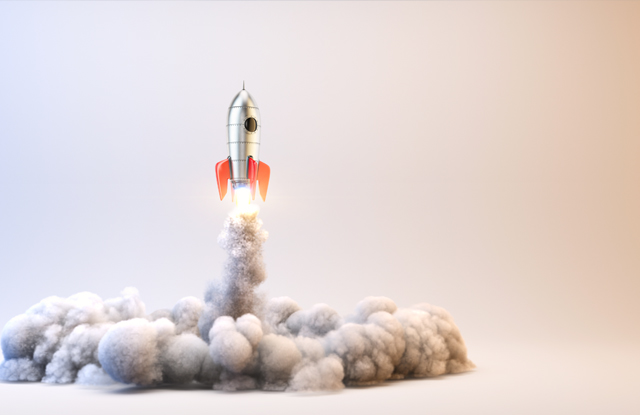
Life cycle inventory – standardized procedure to create new LCA datasets
Supervisor: Marnix Verkammen / Mathieu Udriot / Prof. Jean-Paul Kneib
Type of Project: Semester project, 1 student
Duration: 14 weeks (Official start/end date: Sep. 9th 2024)
Submission of final report: TBD in January 2025
Final Presentation: TBD
Recommended: This project is suitable for a student interested in the space industry, environmental footprint assessment, and who would like to bring a central contribution to the EPFL MAKE teams sustainability strategy. Prior knowledge with life cycle assessment, or the Activity Browser (BrightWay2) software, are a plus.
CONTEXT
eSpace is actively researching and developing methods and products in space sustainability. This large topic includes work on space debris risks, life cycle assessment of space systems, mitigations of environmental impacts, and decision-making support tools to include sustainable aspects in the early design phase of space missions and systems.
Life cycle inventory (LCI) is the second of the four phases defined in the ISO-standard to perform life cycle assessment (LCA). To simplify the inventory steps, several organization have created large databases (eg. ecoinvent) with many datasets containing the environmental impacts of different materials, processes, activities etc. Those datasets are not always sufficient to model a specific system, in particular in the space sector, with exotic materials, and very specific processes that depend each time on the mission. To try to complement the ecoinvent database, the European Space Agency has created an extension with datasets made on data collected in the European space sector.

https://blogs.esa.int/cleanspace/2018/04/20/how-to-make-environmental-friendly-space-missions/
EPFL’s space student teams, in particular the EPFL Rocket Team and the EPFL Spacecraft Teams intend to better understand the environmental impacts of their respective systems. For that, several projects are foreseen and ongoing to collect data about materials, processes, or activities of the teams.
Those information will serve to perform a comprehensive assessment of the impacts of the associations, help identify environmental hotspots which will guide the students to select components that need to be eco-designed. Ultimately the whole process will help reduce the footprint of the team.
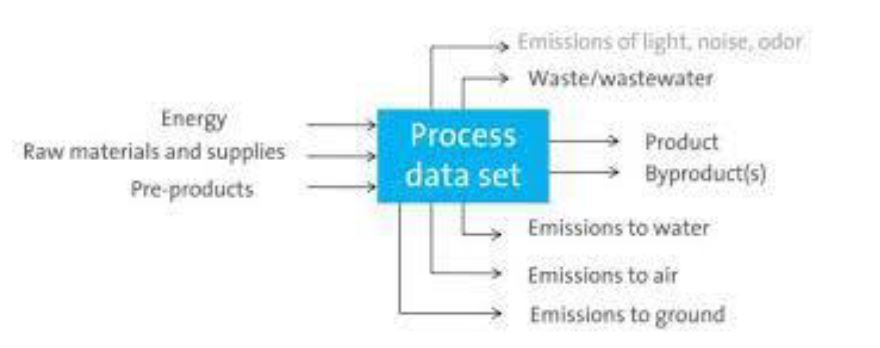
Common components of a dataset [A. Ciroth, “LCA database creation: current challenges and the way forward”, 2019]
PROJECT SCOPE
This projects aims to compile the knowledge required to uniformize the data collection process and create new LCA datasets for a team like the EPFL Rocket Team.
The outcomes of the project shall be tested and adapted to their usage by other student in subsequent projects. Gaps in existing datasets to model the teams’ systems shall be identified to recommend future data collection using the newly created standardized method/procedure.
Finally, the student will be encouraged to exploit synergies with other credited projects happening in parallel in a “sustainability task force” set up in collaboration between eSpace and the EPFL Rocket Team.
OUTCOME
- A toolkit including a procedure on how to create a new LCA dataset, adapted to MAKE projects.
- A report including:
- State-of-affairs on existing LCA databases, and on dataset creation.
- A list of identified missing datasets for modelling the Rocket Team’s systems.
- New datasets created by following the procedure and lessons learnt.
- Recommendations for future data collections.
- A new database on Activity Browser (BrightWay2) with the newly created datasets for the student teams.
TASKS
- Literature review on LCA databases and how to create new life cycle assessment. datasets to complement an inventory.
- Creation of a procedure adapted to the EPFL Rocket Team.
- Review of existing LCA databases.
- Identification of missing datasets to emit recommendations for future data collections.
- Performing data collection on materials or processes as examples for the procedure and create the datasets in Activity Browser (BrightWay2).
CONTACT
Mathieu Udriot
Systems Engineer on Sustainable Space
mathieu.udriot@epfl.ch
Marnix Verkammen
Engineer, eSpace
marnix.verkammen@epfl.ch
Joachim Despature
EPFL Rocket Team president
joachim.despature@epfl.ch
STATUS OF THE PROJECT
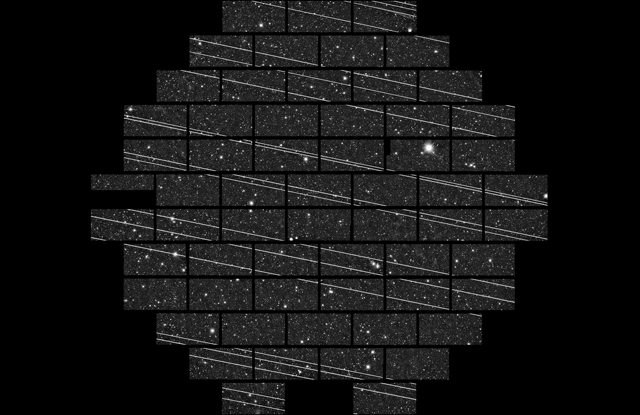
Develop a novel orbit fitting routine
Supervisor: eSpace/LASTRO (Prof. Jean-Paul Kneib/Stephan Hellmich)
Type of Project: Semester project (TP4b)
Duration: 14 weeks (Official start/end date: September 9-December 20)
Submission of final report: January 13
Final Presentation: TBD
Recommended: This project is suitable for a student interested in orbital mechanics and numerical integration. Prior knowledge in Python is a plus.
CONTEXT
As part of the newly established Space Sustainability Hub (SSH) at eSpace, we are exploring novel techniques for determining the rotational and physical properties of space debris. For this purpose, we are currently developing methods for the detection and extraction of space debris observations from large astronomical data archives. These archives contain observational data over a 10-year period and include a large amount of random satellite and space debris observations. On the astronomical images, these objects appear as characteristic streaks, most of which cross the entire detector during the several minutes of exposure time. To identify the object that caused the streak, the observations are correlated with publicly available catalogs of satellites and space debris. However, due to uncertainties in the cataloged orbital elements, propagation errors and the fact that the real orbits are constantly changing, the observation does not precisely match the cataloged orbit. In order to determine the precise observation time, the orbits from the catalogs need to be fitted to exactly match the observation.
PROJECT SCOPE
The goal of this project is to develop an orbit determination method that does not rely on exact observation time stamps, but rather treat the observation time as a variable during the fitting process. Existing orbital mechanics libraries such as Orekit contain sophisticated orbit determination and fitting routines. These methods however account only for errors in the astrometry (the measured position of an orbital debris particle in the sky) and not for uncertainties in the observation time. Due to the high resolution of the images, the astrometry is very accurate but for the objects that cross the whole field during the exposure, the exact exposure time is unknown. In order to be able to fit the orbits of the identified objects to the observations, the uncertainty in the timing needs to be considered.
TASKS
- Familiarize yourself with the Orekit orbital dynamics library
- Develop a tool to fit a refined orbit from multiple orbits or observations of the same object
- Design and implement a method that fits the refined orbit to a streak, taking into account the uncertainty of the observation time
CONTACT
Dr. Stephan Hellmich
LASTRO - EPFL Laboratory of Astophysics
stephan.hellmich@epfl.ch
STATUS OF THE PROJECT
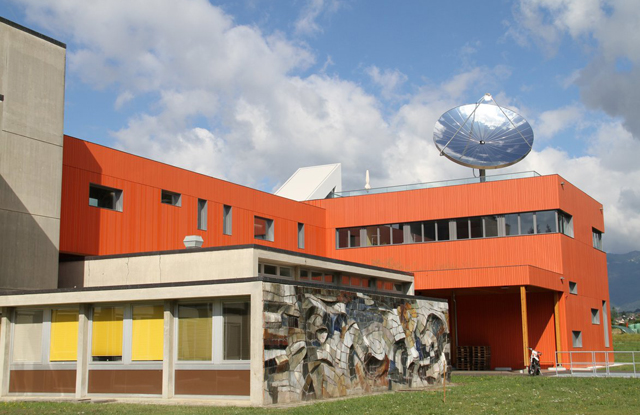
Enabling the Sauverny Observatory for space debris observations
Supervisor: eSpace/LASTRO (Prof. Jean-Paul Kneib/Stephan Hellmich)
Type of Project: Semester project (TP4b)
Duration: 14 weeks (Official start/end date: September 9-December 20)
Submission of final report: January 13
Final Presentation: TBD
Recommended: This project is suitable for a student interested in the software design of autonomous observatories and space surveillance and tracking with a background in Software Engineering. Prior knowledge in JavaScript and Python is a plus.
CONTEXT
To characterize the physical properties of space debris, eSpace/LASTRO is currently expanding its observation possibilities. EPFL has access to the TELESTO telescope, located at the Sauverny observatory close to Geneva which represents a good observing facility. However, in its current state, the telescope is not very well suited for the observation of space debris. There is no possibility to track objects in the orbit of Earth. To overcome these problems, the telescope control software needs to be improved. This can be achieved by an open loop control system that commands the telescope based on the orbital elements of a space object.
PROJECT SCOPE
During the project, you will familiarize yourself with the telescope and its software environment. You will learn about requirements of passive optical observations of space debris. In order for the telescope to be used for space debris observation, the control of the various subsystems of the facility needs to be integrated into an easy-to-use interface through which pointing and tracking of the telescope is done based on the orbital elements of the object to be observed. Since the capabilities of the telescope such as maximum tracking speed, tracking accuracy, response time and maximum rotation rate of the dome are not known, tests to find these constraints need to be performed in order to determine which objects can be reliably observed.
TASKS
- Familiarize yourself with the telescope and the software interface
- Develop a tool that controls the telescope based on the orbital elements of a space object
- Perform tests to determine the limitations of the telescope
CONTACT
Dr. Stephan Hellmich
LASTRO - EPFL Laboratory of Astophysics
stephan.hellmich@epfl.ch
STATUS OF THE PROJECT
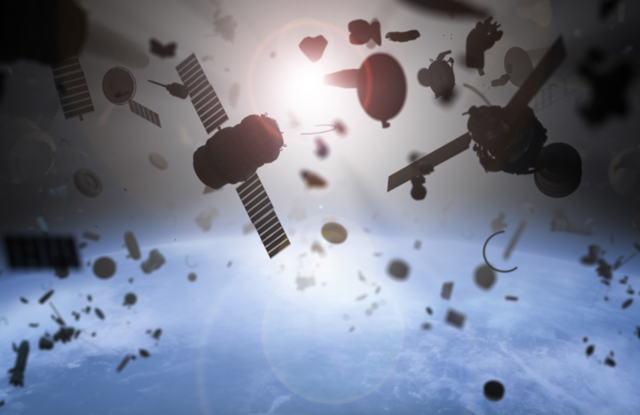
Estimate the orbits of unknown space objects
Supervisor: eSpace/LASTRO (Prof. Jean-Paul Kneib/Stephan Hellmich)
Type of Project: Semester project (TP4)
Duration: 14 weeks (Official start/end date: September 9-December 20)
Submission of final report: January 13
Final Presentation: TBD
Recommended: This project is suitable for a student interested in astronomy and optical instrument design.
CONTEXT
As part of the newly established Space Sustainability Hub (SSH) at eSpace, we are exploring novel techniques for determining the rotational and physical properties of space debris. For this purpose, we are currently developing methods for the detection and extraction of space debris observations from large astronomical data archives. These archives contain observational data over a 10-year period and include a large amount of random satellite and space debris observations. On the astronomical images, these objects appear as characteristic streaks, most of which cross the entire detector during the several minutes of exposure time. The superior sensitivity of the instrument allows the detection of very faint objects. Since these objects are not contained in the catalogs maintained by the space surveillance networks and our observations are not suitable for orbit determination, it is currently impossible to further analyze these detections. However, due to the high angular resolution of the detector, the distortion of the streaks caused by the seeing (atmospheric turbulence) is very prominent. Analyzing this effect and considering the atmospheric conditions during the exposure of the image allows estimating the angular velocity of the object that crossed the field of view which can further be used to estimate the object’s orbit.
PROJECT SCOPE
The goal of this project is to investigate if it is possible to estimate the orbit of unknown objects by analyzing the effect of the atmospheric turbulence and considering the atmospheric conditions during the observation. Specifically, the seeing causes the streak to deviate from a straight line. Amplitude and frequency of these deviations depend on the aperture size of the telescope and the wind speed during the observation. Investigating this correlation can help to estimate the angular velocity of the object that caused the streak. Assuming a circular orbit, the angular velocity can then be used to estimate the orbital altitude of the observed object. Knowing the orbit allows more detailed analysis of the streak such as measuring the apparent magnitude and estimating object’s size.
TASKS
- Familiarization with astronomical data archives
(data products, instruments, sensors, environment that influences the appearance of space objects on astronomical images) - Implementation of a method to analyze the effect of atmospheric turbulence
- Correlation of the results from the analysis with the observing conditions to estimate the objects orbit
- Verification of the results by analysis of streaks caused objects with known orbits
CONTACT
Dr. Stephan Hellmich
LASTRO - EPFL Laboratory of Astophysics
stephan.hellmich@epfl.ch
STATUS OF THE PROJECT
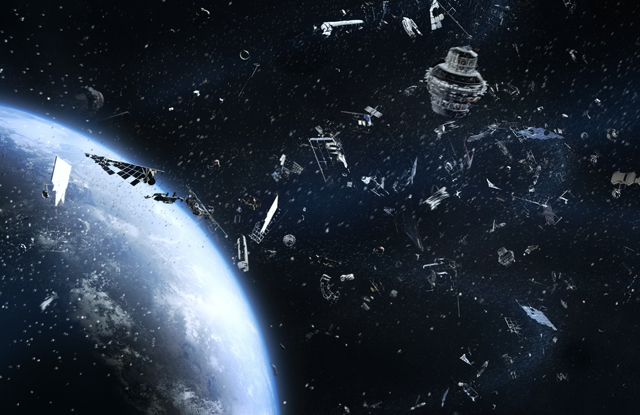
Model a realistic space debris population
Supervisor: eSpace/LASTRO (Prof. Jean-Paul Kneib/Stephan Hellmich/Elisabeth Rachith)
Type of Project: Semester project (TP4b)
Duration: 14 weeks (Official start/end date: September 9-December 20)
Submission of final report: January 13
Final Presentation: TBD
Recommended: This project is suitable for a student interested in orbital mechanics and numerical integration. Prior knowledge in Python is a plus.
CONTEXT
As part of the newly established Space Sustainability Hub (SSH) at eSpace, we are exploring novel techniques for determining the rotational and physical properties of space debris. For this purpose, we are currently developing methods for the detection and extraction of space debris observations from large astronomical data archives. These archives contain observational data over a 10-year period and include a large amount of satellite and space debris observations. On the astronomical images, these objects appear as characteristic streaks, most of which cross the entire detector during the several minutes of exposure time. We are developing a machine learning algorithm to automatically detect satellite and space debris streaks and in order to test the reliability of our method, we integrate artificial streaks in the astronomical images before running the detection process. The artificial streaks are characterized by their brightness and width and their position on the image is randomly selected. To later monitor the performance of the detection method during the processing of large archives, we would like the orbital distribution of artificial streaks to be as close as possible to the natural distribution of satellites and space debris.
PROJECT SCOPE
The goal of this project is to modify the current method for the insertion of artificial streaks on astronomical images to account for a more realistic space debris and satellite population. This implies getting a good understanding of the distribution of space objects across orbital regimes and considering the needs of the machine learning algorithm to have an artificial population that is both realistic and suitable for accuracy tracking.
TASKS
- Familiarize yourself with the current method for the insertion of artificial streaks
- Design a realistic artificial debris population
- Modify the existing tool to integrate the artificial streaks on astronomical images
CONTACT
Dr. Stephan Hellmich
LASTRO - EPFL Laboratory of Astophysics
stephan.hellmich@epfl.ch
Elisabeth Rachith
LASTRO - EPFL Laboratory of Astophysics
elisabeth.rachith@epfl.ch
STATUS OF THE PROJECT
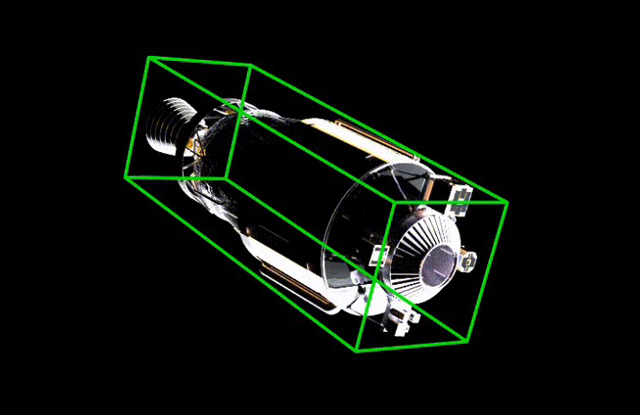
Spacecraft Pose Estimation, on the edge
Supervisor: Andrew Price / Mathieu Salzmann
Type of Project: Master’s project, 1 student (can be adapted for TP-IV)
Duration: 14 weeks (Official start date: September 2024)
Submission of final report: TBD in January 2025
Final Presentation: TBD
Recommended: This project is suitable for an ambitious student interested in space applications and in gaining experience deploying software to hardware.
CONTEXT
Monocular pose estimation is the challenge of estimating the relative attitude and position of a target using a single camera. The computer vision community has demonstrated high accuracy and robust algorithms for pose estimation in terrestrial applications. However the space environment presents unique challenges. Space-grade hardware for example greatly constrains the power consumption and memory bandwidth of such algorithms. As such, the computer science trend of larger and larger networks is not feasible in a deployed hardware application.
The aim of this project is to demonstrate spacecraft pose estimation algorithms running on small edge devices.
PROJECT SCOPE
- Survey available pose estimation algorithms; select two contenders.
- Deploy the algorithms to an edge device (currently a JETSON NANO is available).
- Compare performance of the two algorithms on rendered or real images.
- Latency
- memory
- Accuracy
OUTCOME
- Two deployed spacecraft pose estimation algorithms.
- A report comparing the strengths, weaknesses of the two algorithms’ architecture when deployed on an edge device.
Prerequisites
- Proficiency in Python
- Familiarity with PyTorch
- Familiarity with the camera model (world frame to image plane linear algebra)
- Experience with micro-controllers or edge devices is a plus
References
“A Survey on Deep Learning-Based Monocular Spacecraft Pose Estimation: Current State, Limitations and Prospects” Acta Astronautica 2023
https://arxiv.org/abs/2305.07348
“Wide-Depth-Range 6D Object Pose Estimation in Space” CVPR 2021
https://arxiv.org/abs/2104.00337
“DVMNet: Computing Relative Pose for Unseen Objects Beyond Hypotheses” CVPR 2024
https://arxiv.org/pdf/2403.13683
CONTACT
Andrew Price, PostDoc at eSpace
andrew.price@epfl.ch
STATUS OF THE PROJECT

EPFL Rocket Team
Click HERE to visit the EPFL Rocket Team’s projects page.

EPFL Spacecraft Team
Click HERE to visit the EPFL Spacecraft Team’s projects page.

Xplore
Click HERE to visit Xplore’s projects page.

Space Situational Awareness
Click HERE to visit SSA’s projects page.

Asclepios
Click HERE to visit Asclepios’s projects page.







